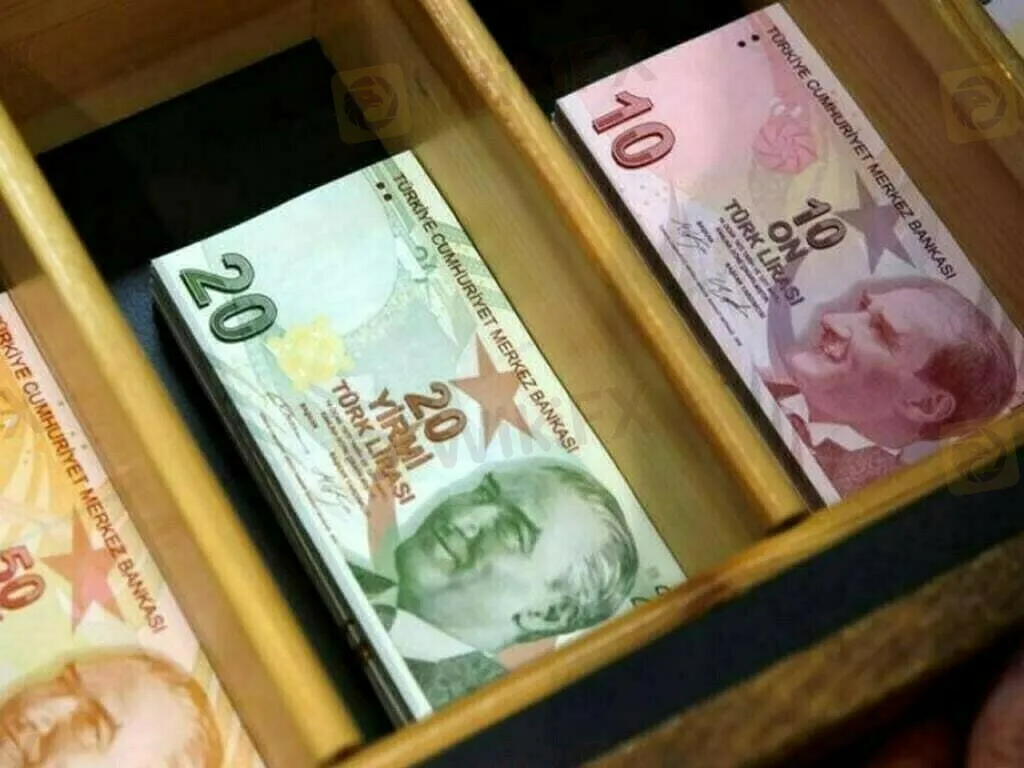简体中文
繁體中文
English
Pусский
日本語
ภาษาไทย
Tiếng Việt
Bahasa Indonesia
Español
हिन्दी
Filippiiniläinen
Français
Deutsch
Português
Türkçe
한국어
العربية
Turkish lira rises 6% after lending curbs
Abstract:The Turkish lira rose 6 percent versus the dollar on Monday after Turkey restricted lira lending to many enterprises with more than $1 million in foreign currency capital.
Click Here: After you read it, Daily Routine with WikiFX
As of 5:31 a.m. GMT, the lira was worth 16.099, up from Friday's closing rate of 16.99. It had risen as high as 16.03 against the dollar.
After most local markets closed for the week on Friday, the BDDK banking watchdog said that companies can't get new lira loans if they have more than 15 million lira ($908,000) in forex cash assets that are more than 10 percent of their total assets or annual revenues.

Analysts thought that this move would help the lira because it could force many large and medium-sized companies to convert their foreign currency assets into lira so they can keep getting credit.
Since a historic currency crash in December sent inflation soaring, the government and central bank have taken a lot of steps, and the new rule was the most recent one.
After Erdogan promised more rate cuts, the Turkish lira fell even more.
The BDDK said that the move would make the economy more stable.
Last year, the lira lost 44% of its value against the dollar. This happened after a series of interest rate cuts, even though inflation was on the rise (73.5%).
Even after the early moves on Monday, it is still 18% weaker this year.
Still putting pressure on the lira are worries about policy, low official reserves, a growing current account deficit, and investors' and savers' fears of capital controls.
Disclaimer:
The views in this article only represent the author's personal views, and do not constitute investment advice on this platform. This platform does not guarantee the accuracy, completeness and timeliness of the information in the article, and will not be liable for any loss caused by the use of or reliance on the information in the article.
Read more

Yen Rebounds! Is This the Opportunity Investors Have Been Waiting For?
The Japanese yen has staged a sharp rebound, breaking below key technical levels against the U.S. dollar. With diverging central bank policies, heightened risk sentiment, and a shifting macro backdrop, is this a real opportunity—or a trap?

VIPS Group of Companies Exposed: ED Seizes Assets in 100-Crore Ponzi Forex Scam
The Enforcement Directorate (ED) has cracked down on an INR 100-crore scam involving illegal forex trading and Ponzi schemes by seizing immovable assets and digital devices besides freezing bank accounts across multiple cities in India. Read more.

Foraxi Joins the WikiFX Family
Explore how the addition of Foraxi to the WikiFX family opens up forex trading growth avenues for traders around the world.

Iran’s Strait Strategy: Is the World Ready for $100 Oil?
Tensions in the Middle East are rising quickly, and global oil markets are already feeling the pressure. Since Iran and Israel entered open conflict, oil prices have jumped from around $60 to nearly $80 per barrel. Now, with the United States joining the fight and launching strikes against Iran, the situation has become even more serious. Iran’s threat to seal off the Strait of Hormuz could ignite a global energy meltdown, spike oil prices beyond $100, and unleash economic chaos across the world.
WikiFX Broker
Latest News
Top Wall Street analysts like these three stocks for long-term growth
Dow futures slide 150 points as oil rises following U.S. bombing of Iran: Live updates
Asia-Pacific markets set to open lower as U.S. bombing of Iran escalates Middle East crisis
Oil at $100 a barrel? U.S. role in Iran-Israel fight fuels market jitters
Consob Blocks 7 Fraudulent Investment Websites Amid Ongoing Crackdown
MyFundedFutures Tightens Compliance Measures Following Regulatory Pressure
Investors Beware! The Pound May Face a Downturn in the Second Half of the Year
European markets start the week lower as Middle East crisis worsens
Latest FCA Warning List Out! Beware & Protect Your Money
European defense stocks sell-off intensifies after U.S. hits Iran
Currency Calculator


